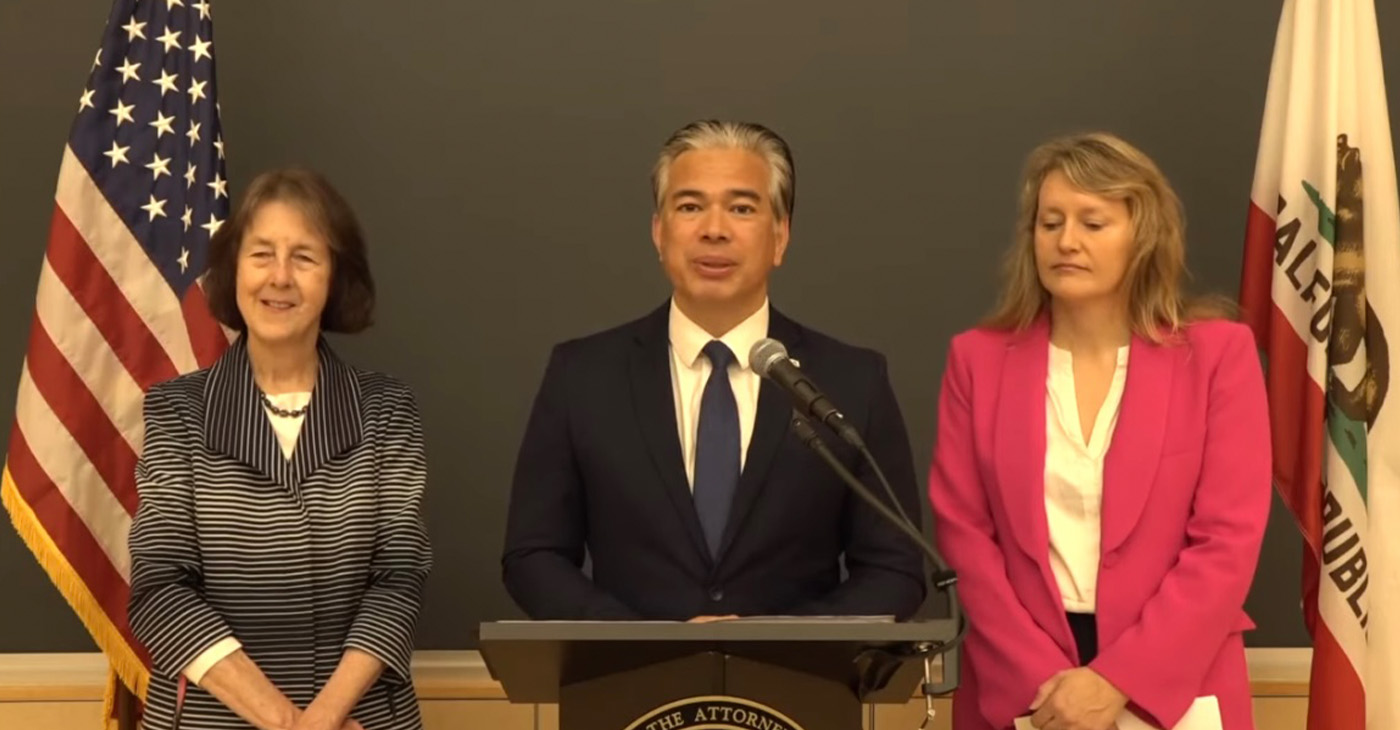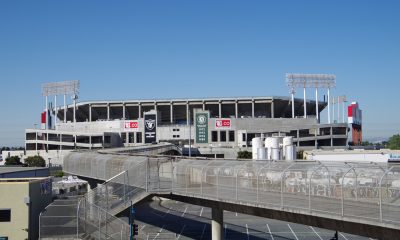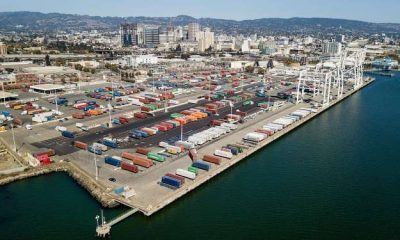Technology
Amtrak to Operate System that Might Have Prevented Crash
Joan Lowy, ASSOCIATED PRESS
WASHINGTON (AP) — The deadly Amtrak derailment near Philadelphia appears to be yet another accident that didn’t have to happen.
It could have been avoided if a long-sought safety technology had been operating on its tracks and trains, according to information gathered by accident investigators.
On Thursday, Amtrak President Joseph Boardman said the nation’s passenger railroad will begin operating the technology, called positive train control, throughout its busy Northeast Corridor by the end of the year. The technology was installed on the tracks where the accident occurred, but it had not been turned on because further testing was needed, he said in an interview.
Seven years ago, Congress gave Amtrak and freight and commuter railroads until the end of this year to install the technology, on their trains and tracks. But few railroads are expected to meet the deadline. Now lawmakers are proposing to give railroads another five to seven years to get the task done.
The technology used by most railroads relies on GPS, wireless radio and computers to monitor train position. Amtrak’s system uses transponders, which emit transmit information through radio signals. Both types of systems can automatically brake to prevent derailments due to excessive speed, collisions with other trains, trains entering track where maintenance is being done or going the wrong way because of a switching mistake. It’s all aimed at preventing human error, which is responsible for about 40 percent of train accidents.

A preliminary review of the Amtrak train’s event data recorder, or “black box,” shows it was traveling at 106 mph in an 80 mph zone just before it entered a curve where the speed limit is 50 mph, according to National Transportation Safety Board investigators. The train’s engineer applied maximum braking power seconds before the crash, but it was too late.
At least eight people were killed and about 200 injured in the derailment.
“We are very keen on positive train control,” NTSB board member Robert Sumwalt. If such a system had been in operation, “this accident would not have occurred,” he told reporters.
The Philadelphia accident shares similarities with a 2013 derailment in New York on the Sunday morning after Thanksgiving. A Metro-North commuter train derailed in the Bronx, killing four and injuring dozens of others. The train’s engineer had fallen asleep and failed to slow the train from 82 mph to the maximum authorized speed of 30 mph as it entered a curve. An NTSB investigation concluded that crash would also have been prevented by positive train control.
Not counting Tuesday’s derailment, the NTSB has investigated 29 passenger and freight train accidents that officials say could have been prevented by positive train control since 2004. Sixty-eight people died and more than 1,100 were injured in those crashes. The board has been urging installation of the technology, or its precursors, for 45 years.
In 2008, a month after a commuter train and a freight train collided in Chatsworth, California, killing 25 people, Congress passed a law requiring that positive train control be installed by Dec. 31, 2015. But railroads have long complained that complications will prevent them from meeting that deadline.
In March, the Senate Commerce, Science and Transportation Committee approved a bill that would give railroads until 2020 to install the technology, and another two years after that if they need more time. The Brotherhood of Locomotive Engineers and Trainmen, which opposed the bill, complained at the time that some of its provisions would make it virtually impossible for federal regulators to ever force freight railroads to implement the technology.
The bill’s key sponsors — Sens. John Thune, R-S.D., Roy Blunt, R-Mo., Bill Nelson, D-Fla., and Claire McCaskill, D-Mo. — have each received more than $100,000 in contributions to their campaigns and political committees from the rail industry over the course of their careers in Congress, according to the political money-tracking website OpenSecrets.org.
Several of the senators said in statements or through their aides that reports by government agencies show railroads need more time. One of the hurdles is getting all the railroads to agree on systems that will work on everyone’s tracks despite differing policies and operations. Such interoperability is necessary because freight railroads frequently operate on each other’s tracks. Commuter railroads and Amtrak also often operate on freight rail tracks.
Amtrak has been one of the more aggressive railroads in installing the technology. So far, the system is in operation from Boston to New Haven, Connecticut; from New Brunswick to Trenton in New Jersey, and from Perryville, Maryland, to Washington. It has also been installed on some routes in the Midwest. Amtrak has spent $110.7 million since 2008 to install PTC.
An older, less-robust technology that can also slow trains if they go too fast called automatic train control was installed on southbound tracks through the area where the derailment occurred, Boardman said. However, the technology was never added to northbound tracks through the site because many years ago a decision was made that it was unlikely a train would be going fast enough to risk derailment, he said.
“For decades we have seen preventable derailments and collisions occur,” said former NTSB Chairman Deborah A.P. Hersman. “If we do not implement technology such as PTC to prevent these events, we will continue to see them for the foreseeable future.”
One of the obstacles is the cost to industry of implementing positive train control, estimated at more than $10 billion. A Republican-controlled House panel approved deep spending cuts to Amtrak’s budget on Wednesday just hours after the Philadelphia accident. An attempt by Democratic lawmakers to boost Amtrak spending by $1 billion was rebuffed.
___
Follow Joan Lowy on Twitter at http://www.twitter.com/AP_Joan_Lowy.
Copyright 2015 The Associated Press. All rights reserved. This material may not be published, broadcast, rewritten or redistributed.
###
Community
Attorney General Rob Bonta, Oakland Lawmakers, Introduce Legislation to Protect Youth Online
At a press conference in downtown Oakland on Jan. 29, Attorney General Rob Bonta joined Sen. Nancy Skinner (D-Berkeley) and Assemblymember Buffy Wicks (D-Oakland) to announce two pieces of legislation designed to protect children online. The bills are Senate Bill (SB) 976, the Protecting Youth from Social Media Addiction Act and Assembly Bill (AB) 1949, the California Children’s Data Privacy Act.

By Magaly Muñoz
At a press conference in downtown Oakland on Jan. 29, Attorney General Rob Bonta joined Sen. Nancy Skinner (D-Berkeley) and Assemblymember Buffy Wicks (D-Oakland) to announce two pieces of legislation designed to protect children online.
The bills are Senate Bill (SB) 976, the Protecting Youth from Social Media Addiction Act and Assembly Bill (AB) 1949, the California Children’s Data Privacy Act.
Skinner authored SB 976, which addresses online addiction affecting teenage users, while Wicks’s bill, AB 1949, takes on big tech by proposing data privacy and children rights protections.
“Social media companies unfortunately show us time and time again that they are all too willing to ignore the detriment to our children, the pain to our children, the mental health and physical challenges they face, in order to pursue profits,” Bonta said.
SB 976 would allow parents to control the nature and frequency of the content their under-18-year-old children see on social media. Notifications from social media platforms would also be paused from midnight to 6 am and controls would allow parents to set time limits on their children’s usage based on their discretion.
Skinner stated that the longer that kids are on their phones during the day, the higher the risk for depression, anxiety and other related issues.
The bill would also push to get rid of addictive media that is harmful for young women and girls, specifically image filters that mimic cosmetic plastic surgery.
Bonta and 33 other attorney generals had previously filed a lawsuit against Meta, owner of the popular social media applications Instagram and Facebook. The filing claims that the company purposefully uses algorithmized content that harms younger audiences.
“Social media companies have the ability to protect our kids, they could act, but they do not,” Skinner said.
The Child Data Privacy Act would strengthen existing protections for data privacy under the California Consumer Privacy Act (CCPA). The lawmakers argue that the law does not have effective protection for those under 18 years old.
Wicks stated that the bill would forbid businesses from collecting, using, sharing, or selling personal data of anyone underage unless they receive informed consent, or it becomes necessary for the purpose of the business.
Wicks added that the acts would make it so that a search on the internet like “How do I lose weight?” would not result in dieting pill advertisements targeting youth, which, some experts report, could be harmful to their mental and physical health.
“In a digital age where the vulnerabilities of young users are continually exploited, we cannot afford to let our laws lag behind, our children deserve complete assurance that their online experience will be safeguarded from invasive practices,” Wicks said.
Supporters of the two acts say they have gained bipartisan support issue, but the authors and Bonta expect them to be met with pushback from the affected companies.
#NNPA BlackPress
Unleashing the Power_ Discover the The Thrills…F-TYPE Convertible
Performance & Handling Powered by a robust 5.0 Liter Supercharged 8 Cylinder Gas Engine, the F-Type R75 doesn’t just purr; it roars with a mighty 575 horsepower and 516 lb-ft of torque. Coupled with an 8-speed Automatic Transmission, the car offers an exhilarating drive that is both fast and smooth. The All-Wheel Drive system ensures […]
The post Unleashing the Power_ Discover the The Thrills…F-TYPE Convertible first appeared on BlackPressUSA.

Performance & Handling
Powered by a robust 5.0 Liter Supercharged 8 Cylinder Gas Engine, the F-Type R75 doesn’t just purr; it roars with a mighty 575 horsepower and 516 lb-ft of torque. Coupled with an 8-speed Automatic Transmission, the car offers an exhilarating drive that is both fast and smooth. The All-Wheel Drive system ensures excellent traction and stability, making it a joy to handle in various driving conditions. The Electric Power Assisted Steering and JaguarDrive Control with Selectable Driving Modes add to the car’s agility, providing a driving experience that is as intuitive as it is thrilling. Additionally, the Adaptive Dynamics and Electronic Active Differential with Torque Vectoring by Braking enhance the car’s responsiveness, making every turn a testament to its engineering prowess. Unique to AutoNetwork.com.
with Selectable Driving Modes add to the car’s agility, providing a driving experience that is as intuitive as it is thrilling. Additionally, the Adaptive Dynamics and Electronic Active Differential with Torque Vectoring by Braking enhance the car’s responsiveness, making every turn a testament to its engineering prowess. Unique to AutoNetwork.com.
Like us on and share https://www.facebook.com/autonetwork
#AutoNetwork
#AutoNetworkReports
Subscribe to our channel now for more videos.
Twitter http://www.twitter.com/liveautos
LinkedIn http://www.linkedin.com/in/autonetwork
Coupons Offers and Deals https://www.couponsoffersanddeals.com/
The post Unleashing the Power_ Discover the The Thrills…F-TYPE Convertible first appeared on BlackPressUSA.
#NNPA BlackPress
Elevate Your Ride…
Join us for a virtual car’s best-detailed walkaround of the sleek and stylish 2024 Jaguar F-TYPE AWD convertible. Get an up-close look at the exterior design, interior features, and performance capabilities of this luxury sports car. From its powerful engine to its advanced technology, this video will give you a comprehensive overview of what makes […]
The post Elevate Your Ride… first appeared on BlackPressUSA.

Join us for a virtual car’s best-detailed walkaround of the sleek and stylish 2024 Jaguar F-TYPE AWD convertible. Get an up-close look at the exterior design, interior features, and performance capabilities of this luxury sports car. From its powerful engine to its advanced technology, this video will give you a comprehensive overview of what makes the F-TYPE AWD convertible stand out on the road. Unique to AutoNetwork.com.
Like us on and share https://www.facebook.com/autonetwork
#AutoNetwork
#AutoNetworkReports
Subscribe to our channel now for more videos.
Twitter http://www.twitter.com/liveautos
LinkedIn http://www.linkedin.com/in/autonetwork
Coupons Offers and Deals https://www.couponsoffersanddeals.com/
The post Elevate Your Ride… first appeared on BlackPressUSA.
-

 Activism4 weeks ago
Activism4 weeks agoOakland Post: Week of March 20 – 26, 2024
-

 #NNPA BlackPress3 weeks ago
#NNPA BlackPress3 weeks agoCOMMENTARY: D.C. Crime Bill Fails to Address Root Causes of Violence and Incarceration
-

 #NNPA BlackPress3 weeks ago
#NNPA BlackPress3 weeks agoMayor, City Council President React to May 31 Closing of Birmingham-Southern College
-

 #NNPA BlackPress3 weeks ago
#NNPA BlackPress3 weeks agoFrom Raids to Revelations: The Dark Turn in Sean ‘Diddy’ Combs’ Saga
-

 #NNPA BlackPress3 weeks ago
#NNPA BlackPress3 weeks agoCOMMENTARY: Lady Day and The Lights!
-

 #NNPA BlackPress3 weeks ago
#NNPA BlackPress3 weeks agoBaltimore Key Bridge Catastrophe: A City’s Heartbreak and a Nation’s Alarm
-

 #NNPA BlackPress3 weeks ago
#NNPA BlackPress3 weeks agoBaltimore’s Key Bridge Struck by Ship, Collapses into Water
-

 Activism3 weeks ago
Activism3 weeks agoOakland Post: Week of March 27 – April 2, 2024

















































